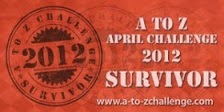
Since its release in 1977, Traveller has been through a number of versions – Classic Traveller; MegaTraveller; Traveller: The New Era; Mark Miller’s Traveller (also known as T4); GURPs Traveller; Traveller T20; Traveller Hero; and Mongoose Traveller. Mark Miller’s legendary T5 is still in development.
Mongoose Traveller is the current, officially supported, version of Traveller and along with a slew of excellent titles, Mongoose has been quite supportive of third-party publishing groups, such as Spica, who have published adventures, supplements and ship deck plans.
I started playing Classic Traveller in about 1980 and, to me, the core mechanic is roll 2d6 and score 8+ to succeed – this covers so many situations, with the GM able to add or subtract DMs as required that, like the paper clip, it seems impossible to understand why we haven’t been using it since the Egyptians began playing dice to while away the hours between pyramid builds.
What put me off MegaTraveller was DGP’s Task Roll mechanism. To me, they had taken an intuitive system and attempted to reduce it to a formula, reduce it to something that the GM had no control over. Looking back now, this was probably a mistaken assumption on my part.
DGP did do a lot of amazing stuff for Traveller, but they did have this completist streak that extended from quantifying the Task Roll to mapping the Universe. There is always this desire to know what’s ‘over there’. DGP took this to its illogical extent by mapping the entire Imperium, but otherwise providing little or no data on what they had mapped. So, creative wandering within the Imperium was effective curtailed, but hundreds of worlds, now with basic stats, were left hanging with no further development. Fan groups, like HIWG, did do a lot of work backfilling in what DGP had created – expanding the tables of stats into worlds with their own populations and cultures but, at the end of the day, most of this work was never picked up by DGP, as the licensee, or GDW, when they took Traveller back in house. This illusion of completeness did have people complaining that the Imperium, as a setting, was boring.
And then there was the Imperial Civil War story line, started by GDW and carried forward by DGP. A war can add interest and uncertainty to a campaign as the players work their way around the edges. The Imperial Civil War tore down what, to a number of players, was a viable setting, but did it in areas that had been poorly described beyond the broad brush Imperial Survey. Consequently, there was this feeling of frustration at the loss of the background, but little attachment to the places of conflict (the Core Worlds and Ilelish, for example).
I missed T:NE completely. I read the blurb on one book that talked about a sentient computer virus called, drum roll, “Virus”, and said, ‘Nah!’
I nearly missed GURPs Traveller as well, but saw the main, 3rd Edition Rule Book and bought them, probably out of a feeling of nostalgia. I was very impressed with what Loren Wiseman did in converting Traveller material to GURPs. I subsequently collected a number of the supplements and support books. Love GURPs character creation and the character templates, love the supplementary material that came out, and collect it purely to mine it for ideas, I’m just not keen on the GURPs combat system. As I get older, I have less time for gaming and so want simpler systems. I therefore bend back towards Classic Traveller because it is so simple in that regard.
Of the later versions of Traveller, such as T4, T20, Hero, and the 1248 setting, I’d never heard of them until my interest in Traveller was rekindled by the release of Mongoose Traveller. I have generated a number of MongTraveller characters, but have yet to play, or run, a game purely under those rules. I find that, in places, MongTraveller is so similar to Classic Traveller that I might as well generate the characters in MongTraveller and run the game as per Classic Traveller to prevent confusion.
So, which version of Traveller is the best? The one you, as a player or referee like, and feel most comfortable with. I’m fortunate in that I love Classic Traveller and like Mongoose Traveller and love the background material for GURPs Traveller. I also like Pocket Empires for T4, a lot of the MegaTraveller material, and Path of Tears for T:NE. In fact, there is always something one can lift from any of these sets of rules to add depth and breadth and height to your own game, no matter what version of Traveller you use.







































.png)








